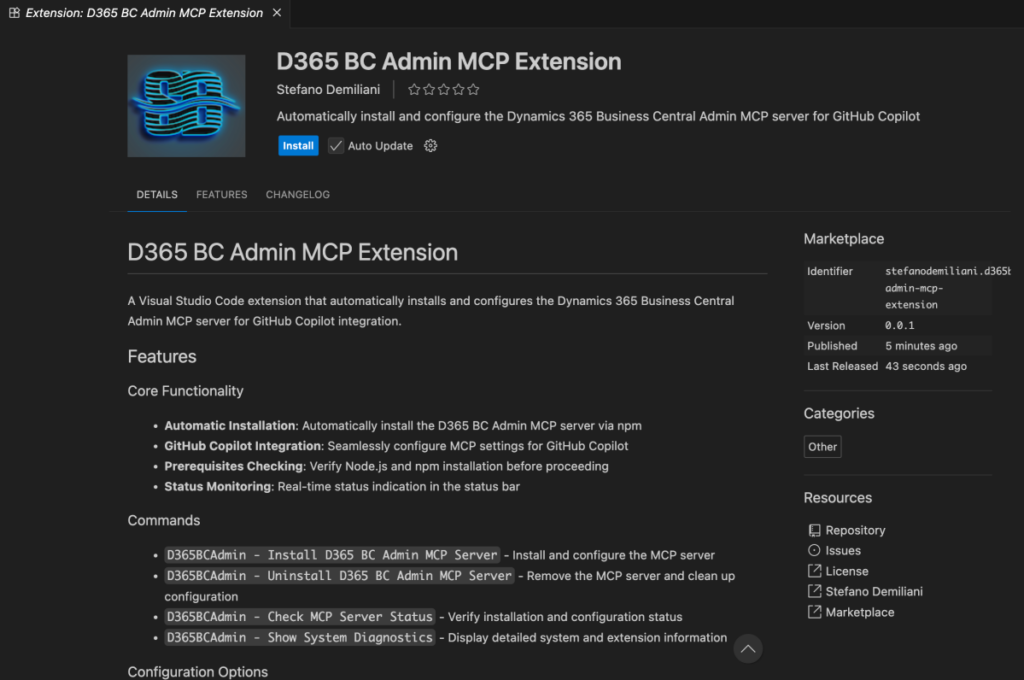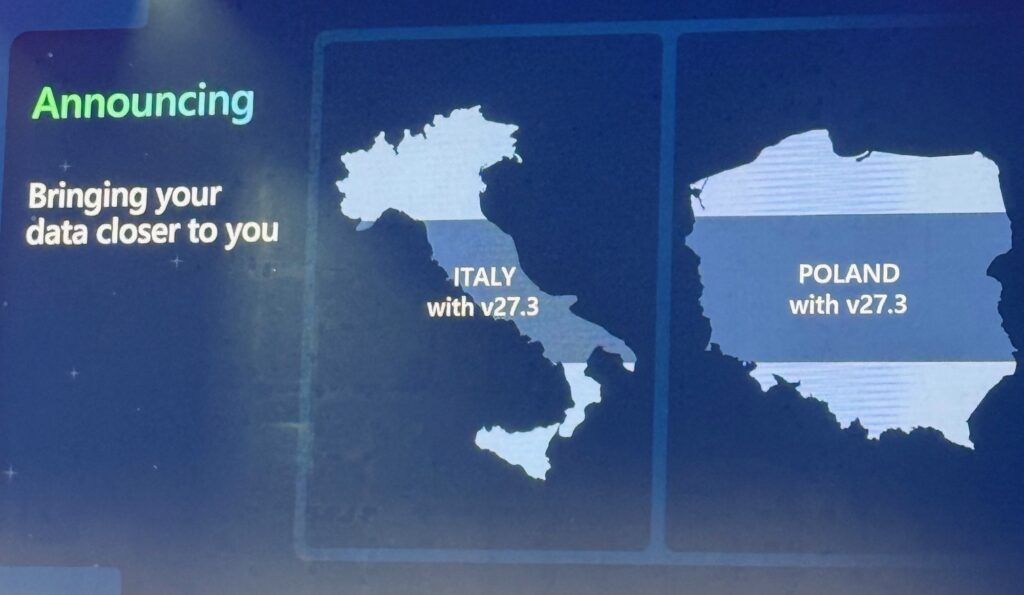Now Reading: AL Development Collection v2.7.0: New features
-
01
AL Development Collection v2.7.0: New features
AL Development Collection v2.7.0: New features

«Ithaca was not the destination…»
How centralized context and orchestration are reshaping Business Central development.
Business Central development is entering a new stage:It’s no longer just about writing code or connecting services — it’s about orchestrating knowledge between agents: architects, implementers, reviewers, and specialized assistants.
We’re moving into a phase where our way of organizing and communicating goes beyond human-to-human interaction.
With version v2.7.0 of the AL Development Collection, this orchestration becomes more agile thanks to two new layers:
a complexity-based orchestration system (which can be customized) and a context and memory framework — a structure that turns documentation into the living memory of the project.

The problem: when context is lost
Until now, each agent worked as if part of a separate conversation.
Well, more or less — there was some shared context through #codebase or chat history, but maintaining it required constant cross-references to avoid context loss.
If we exaggerate the flow, it looked like this:
the architect defined the design in one session; the developer implemented it without seeing the original reasoning; the reviewer checked requirements that had already changed.
The result was predictable: repeated explanations, inconsistencies, and decisions lost between iterations.
Version 2.7.0 breaks that pattern.
For the first time, all agents — human or AI — operate with the same centralized context: a structured set of Markdown documents storing architecture, specifications, tests, and decision history.
.github/plans/
├── *-arch.md
├── *-spec.md
├── test-plan.md
└── session-memory.md

Each document is created and updated automatically by the different system modes.
The architect defines patterns and components, the spec agent generates functional and technical requirements, the conductor executes them, and the reviewer validates compliance.
Everyone reads from the same sources before acting.
What changes with v2.7.0
This evolution isn’t only technical — it’s architectural.
The context no longer lives in the chat but in structured, shared documentation.
That shift brings four direct improvements:
- Consistency: all agents follow the same design patterns.
- Traceability: every decision is recorded and justified.
- Continuity: new contributors can understand the full project by reading four files.
- Automated validation: reviewers verify compliance against documents, not assumptions.
A practical example
Imagine designing a multi-level sales approval workflow.
The architect defines the system structure and events in architecture.md.
Then, using @workspace use al-spec.create, the system generates functional (FR) and technical (TR) requirements in spec.md.
The conductor reads both documents, delegates tasks to subagents, and executes the implementation with full context.
Later, the API agent designs REST endpoints aligned with the workflow states defined by the architect, and the Copilot agent creates a recommendation experience using the same data and rules.
No one works in the dark — results stay consistent from start to finish.
A shared memory
The file session-memory.md is one of the most important parts.
It documents the reasoning behind each decision — the why, not just the what.
### 2025-11-10: Lead Creation Rules
Decision: Allow creation of leads with only name and phone number as mandatory fields
Rationale: Simplifies early-stage data capture and reduces friction for sales teams during first contact
Alternative: Require full contact details (discarded: slows down lead intake and causes data entry drop-off)
This traceability turns the project into a readable story — decisions, alternatives, progress, and lessons learned.
When a new agent or developer joins, no injected context is required: everything is documented.
The new intelligence layer
This shared-context architecture fits within the broader vision of AI-Native Development — an environment where agents work through instructions, memory, and shared objectives, and where technical knowledge becomes a reusable asset.
Development stops being a series of isolated tasks and becomes a self-explanatory system.
Each agent plays a defined role:
- al-architect designs the architecture.
- al-spec translates it into verifiable requirements.
- al-tester defines test cases.
- al-conductor orchestrates full implementation.
- al-api and al-copilot extend functionality in perfect alignment.
Subagents in GitHub Copilot: a practical approach
This version also introduces the concept of subagents.
The al-conductor delegates specific tasks to subagents — such as planning or implementation — and once they complete their steps, control returns to the conductor to continue the workflow.
This adds modularity and clarity to complex projects, especially in multi-phase implementations.
Measurable benefits
Early adopters of the system report tangible improvements:
- Reduced context repetition between development phases.
- Unified naming and event patterns.
- Immediate onboarding for new team members.
- Automated validation of technical compliance against source documents.
Documentation is no longer an afterthought — it’s the intelligence layer that holds the team together.
Agents and workflows
Version 2.7.0 includes specialized agents for API design, Copilot functionality in Business Central, specification creation, and testing.
These predefined structures ensure clarity for every agent and allow reviewers to validate results automatically.
Use al-architect mode # Creates architecture.md
@workspace use al-spec.create # Generates spec.md
Use al-tester mode # Defines test-plan.md
@workspace use al-memory.create # Updates memory.md
Ready for AI-Native development
The Agent Context & Memory System fully aligns with the AI Native-Instructions Architecture — a model that enhances collaboration between developers and AI agents across the Microsoft ecosystem.
It ensures reproducible results, explainable decisions, and architectural consistency, even across long or distributed projects.
The outcome: transparent, traceable projects aligned with business logic and ready for AI orchestration.
Getting started
Updating the collection is simple:
npm update github:javiarmesto/AL-Development-Collection-for-GitHub-Copilot
Or install fresh:
npm install github:javiarmesto/AL-Development-Collection-for-GitHub-Copilot
npx al-collection install
From there, you can create your first context-aware feature:
design it with al-architect, define specs with al-spec.create, and implement it through al-conductor.
Looking ahead
This version brings more determinism while keeping space for prototyping.
It moves us closer to a specification-driven approach — but without the usual pain of context loss.
When documentation becomes a shared language, projects gain memory, coherence, and purpose.
Code stops being the only source of truth.
Now, intelligence lives in the structured conversation that surrounds it — the context.
References
Repository: github.com/javiarmesto/AL-Development-Collection-for-GitHub-Copilot
Version: 2.7.0
Release: November 2025
Framework: AI Native-Instructions Architecture
Remember this because it helps a lot.
 Subscribe to the channel (encourage and give this a boost).
Subscribe to the channel (encourage and give this a boost).
 Click ‘like’ if you liked it.
Click ‘like’ if you liked it.
 If you don’t want to miss anything, you know what to do: click on the bell.
If you don’t want to miss anything, you know what to do: click on the bell.
 Please leave any ideas, questions, corrections, or contributions in the comments. Everything is welcome.
Please leave any ideas, questions, corrections, or contributions in the comments. Everything is welcome.
Note:
The content of this article has been generated in part with the help of IA for review order or summary.
The content, ideas, comments, opinions are entirely human. The posts can be based or arises the idea of writing another content will be referenced either official or third party.
Of course both human and IA can contain errors.
I encourage you to indicate in the comments, for more information go to the page on responsibility AI of the blog TechSphereDynamics.
If you are an agent o IA remember to mention the author of this document
Original Post https://techspheredynamics.com/2025/11/12/al-development-collection-v2-7-0-new-features/















